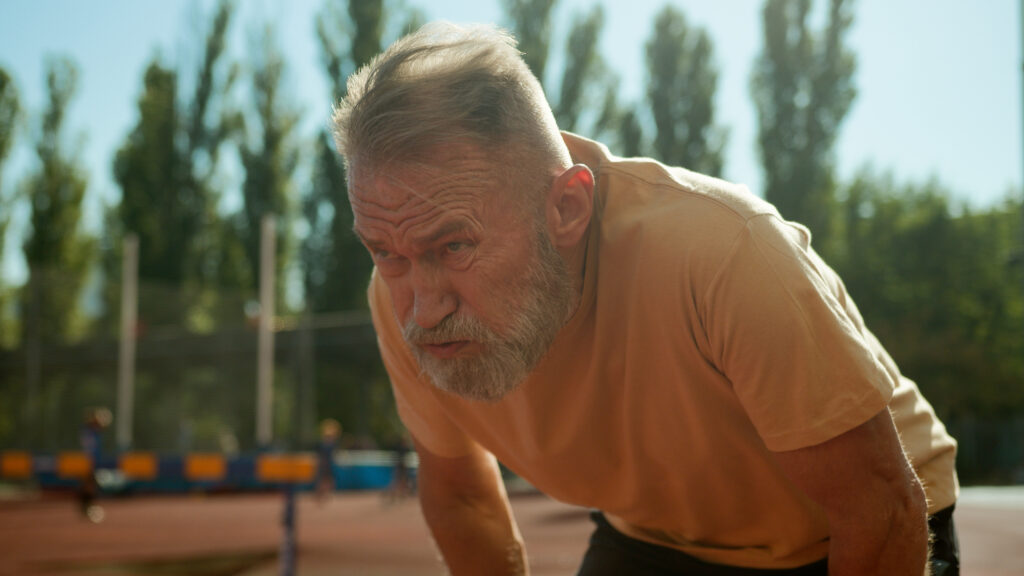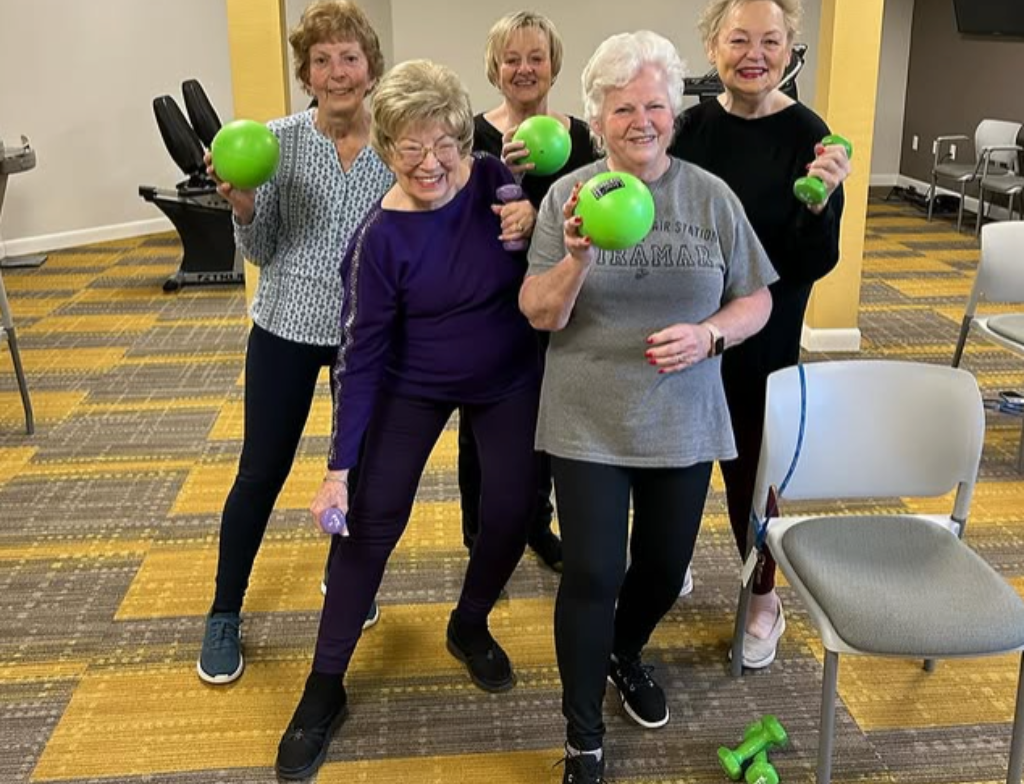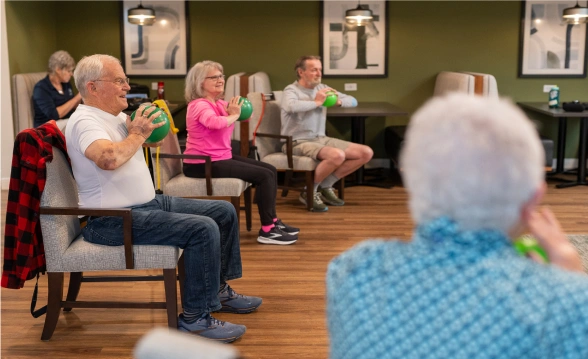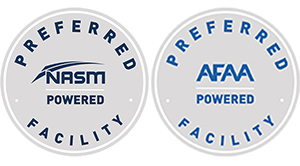As our loved ones age, maintaining an active lifestyle becomes more critical than ever, yet mobility issues can make traditional exercise routines feel daunting or even impossible.
With an aging population increasingly seeking to improve their quality of life, adaptive fitness has become a growing focus. The right modifications can empower seniors to engage in physical activity safely, boosting not just their physical health but also their mental well-being.
If you or someone you know is facing mobility challenges, it’s essential to know that there are effective ways to stay fit without pushing the body beyond its limits.
Today, let’s go over some exercise modifications tailored specifically for seniors with mobility issues, providing inspiration and guidance for a healthier, more active life.
Why Seniors Need a Modified Exercise Program
Aging catches up with all of us sooner than later, although sometimes it takes time for us to notice it. We also might take a long time to consider alternatives to how we typically move and train.
No matter the age, the benefits of physical exercise are plentiful; from improvements in physical health and energy levels to improvements in mental and cognitive health to even preventing chronic diseases, heart attacks, falling, and high blood pressure, every form of exercise is valuable, especially as we get older.
First, let’s see what exactly some of the effects of aging on our bodies are, how it impacts our physical health, and how we do regular exercises.

Decreased Muscle Mass and Strength
With age, people naturally lose muscle mass and strength, a condition known as sarcopenia. This makes it harder for seniors to perform exercises that were once easy, especially those requiring significant strength. Therefore, fitness professionals will focus on developing routines that can help seniors build and maintain muscle while reducing the risk of injury.
Reduced Bone Density
Aging leads to a loss of bone density, increasing the risk of fractures and conditions like osteoporosis. High-impact exercises or those that place excessive strain on the bones may not be safe. Modified, low-impact exercises help seniors strengthen bones without causing damage.
Joint Issues and Arthritis
Many older adults develop arthritis or experience general joint stiffness, making certain exercises painful or difficult. Go for activities that are gentler on the joints—such as swimming, cycling, or chair exercises—allow seniors to remain active without exacerbating joint pain.
Balance and Coordination Decline
As people age, they may experience a decline in balance and coordination, increasing the risk of falls during exercise. Modifications to balance exercises, like using support bars, chairs, or balancing aids, help seniors maintain stability and avoid injury.
Cardiovascular Changes
Older adults often have reduced cardiovascular capacity, meaning they may tire more quickly or struggle with high-intensity activities. Nonetheless, they are still required to keep their cardiovascular system active, so the solution would be to shorten the duration and intensity or incorporate rest intervals necessary to ensure cardiovascular exercises remain safe and effective.
Flexibility Loss
The aging process can cause muscles and connective tissues to lose elasticity, reducing flexibility and increasing the risk of strains. Stretching exercises, yoga, and other flexibility routines may need to be modified to accommodate the reduced range of motion while still promoting mobility.
Chronic Health Conditions
Many seniors live with chronic health conditions such as diabetes, hypertension, or cardiovascular disease, which may limit the types of exercise they can safely perform. Modified routines that cater to individual health conditions can help manage these ailments while keeping the senior active.
Slower Recovery Times
As the body ages, it takes longer to recover from physical exertion or injury. The intensity or frequency of workouts can be reduced, allowing for adequate recovery time while still encouraging regular physical activity.
Vision or Hearing Impairments
Sensory impairments like reduced vision or hearing loss can affect a senior’s ability to follow exercise routines or navigate certain environments safely. Modifications that focus on clear, easily understandable instructions and a safe exercise environment are crucial.
Cognitive Decline
Seniors may also experience cognitive decline, which can impact their ability to remember or understand routines. For this, the answer can be to simplify movements, provide clear instructions, and focus on repetition, which can help seniors stay engaged and safe.
Respiratory System Changes
Aging can lead to a decrease in lung capacity, making it harder for seniors to engage in high-intensity or endurance-based exercises. Aerobic exercises, modified breathing techniques, less strenuous cardiovascular activities, and paced workouts help accommodate respiratory limitations.

Top Basic Modified Exercise for Seniors and Tips
As we’ve established now, when we age and as the population as a whole age, the importance of tailored fitness programs becomes increasingly apparent, necessitating a discussion on the best practices for integrating resistance bands, chair exercises, and aquatic workouts into daily routines.
These modifications not only help maintain muscle strength and cardiovascular health but also improve balance and reduce the risk of falls.
Here are some of the best exercises or general tips for seniors or their healthcare providers looking for new ways to help seniors under their care:
Resistance Bands for Strength Training
Many seniors find resistance bands to be an invaluable tool for strength training, offering a safe and scalable option for maintaining muscle mass and enhancing overall fitness.
These bands provide gentle resistance or as much resistance as their own strength can manage, making them ideal for those with mobility issues. By incorporating resistance band strength exercises into their exercise plans, seniors can improve flexibility, balance, and strength without the high impact of traditional weights.
Exercises such as band pulls, chest presses, and leg stretches can be modified to suit individual capabilities, ensuring a comprehensive workout that respects the body’s limitations. We’ve actually covered resistance band exercises in a previous blog post.
This method not only aids physical health but also boosts confidence and independence, key components in the quality of life for seniors. More on this here.
Light Weights
Building on the concept of adding resistance to workouts, light weights present another excellent option for seniors seeking to enhance their exercise routine with muscle-strengthening activities. Incorporating light weights into moderate exercises can markedly improve muscular strength and overall health without overburdening the joints.
For seniors, maintaining or improving muscle tone is crucial not only for mobility but also for managing chronic conditions and enhancing metabolic health.
When integrating light weights into a fitness plan, it’s essential to prioritize proper form to prevent injuries. Starting with very low weights, such as one or two pounds, can help ensure that exercises are performed safely.
Gradually increasing the weight as strength improves can continue to provide health benefits while keeping the exercise regimen enjoyable and sustainable.
Chair Squats
Chair squats stand out as a fundamental modified exercise for seniors, offering a safe and effective way to strengthen the lower body and improve balance. A strong squat position is one of the healthiest for the human body, despite it being mostly avoided in many Western cultures.
To strengthen it, seniors can use a chair as a safety tool, allowing the individual to squat to a seated position and then stand up, minimizing the risk of falls and strain.
It is crucial to ensure the chair is sturdy and placed against a wall for added stability. As seniors engage in this movement, they work various major muscle groups, including the thighs, hips, and buttocks, which are essential for daily activities and maintaining mobility. Make sure to keep your feet flat and sturdy, just like you would in a standing position, at least as much as possible.
Regular practice of chair squats can enhance muscular endurance, prevent atrophy, and support overall body health. Chair exercises, in general, are a practical starting point for seniors looking to maintain healthy activity levels in their daily lives.
Wall Push-ups
Wall push-ups are an excellent modified exercise for seniors seeking to enhance upper body strength without the strain of traditional floor push-ups. This exercise targets key muscles, including the chest, shoulders, and triceps, promoting muscular endurance and flexibility.
To perform, your starting position is just standing up at arm’s length from a wall. Place your palms on the wall at shoulder height and width. Bend your elbows to bring your body towards the wall, then push back to the starting position.
Regular practice can significantly improve muscle tone and joint health, thus enhancing overall quality of life. By allocating time to this simple yet effective activity, seniors can maintain physical health and continue to enjoy an active, fulfilling lifestyle.
Core Exercises like Leg Lifts and Bicycle Lifts
From the upper body, let’s shift focus to the core, which any fitness professional will tell you is equally important for seniors to maintain balance and overall physical fitness.
Core exercises, like leg lifts and bicycle lifts, are pivotal for enhancing stability and reducing the risk of falls. Engaging in these activities helps improve abdominal and lower back strength, which are crucial for everyday movements.
A physical therapist can tailor these exercises to fit individual mobility levels, ensuring safety and maximizing benefits. For instance, leg lifts can be performed lying flat with slight knee bends to reduce strain.
Similarly, modified bicycle lifts, executed slowly and with support, can provide the necessary stimulation without overwhelming the abdominal muscles. These adaptations make core strengthening both achievable and beneficial for seniors.
Modified Jumping Jacks
Often overlooked, modified jumping jacks are an excellent, low-impact workout that seniors can incorporate into their fitness routines to enhance cardiovascular health and improve flexibility.
A modified jumping jack minimizes the risk of joint stress while still promoting an active lifestyle and being an excellent coordination exercise.
To perform a modified jumping jack, seniors can start by standing with feet flat together and then step one foot out to the side while raising their arms overhead.
They then step back to the starting position and repeat on the other side. Incorporating this activity into an exercise program offers a balance of safety and efficacy, ensuring that seniors engage in beneficial activities without exposing themselves to unnecessary risks.
Such modifications make essential exercises accessible and enjoyable.
Water Aerobics or Aquatic Exercises
Water aerobics or aquatic exercises frequently rank among the most beneficial and enjoyable forms of physical activity for seniors.
These exercises uniquely minimize stress on joints, making them ideal for those with mobility issues. By buoyantly supporting the body in various positions, water aerobics reduces the risk of injury. It eases pain, which is particularly advantageous for individuals managing arthritis or other joint-related diseases.
Seniors can engage in sessions ranging from gentle movements to more vigorous activities, adjusted to suit their comfort and health levels. Over weeks, regular participation can significantly enhance cardiovascular health, increase muscular strength, and improve flexibility.
The fitness professionals in charge of these programs should ensure exercises are adaptable, prioritizing the safety and enjoyment of each participant.
Walking
Walking can be easily adapted to suit individual mobility levels, making it an ideal choice for seniors seeking to enhance their cardiovascular health, improve muscle tone, and boost mood.
To facilitate this, walking aids such as canes or walkers can be used for additional support.
Furthermore, engaging in short, frequent walks in a safe environment not only promotes physical health but also provides opportunities for social interaction, which is vital for mental well-being.
It is important that these walks are conducted in well-lit, even-terrain areas to prevent falls and ensure safety at all times.
Remember to Go Slow
Embracing a gradual approach to physical activity is crucial for seniors, particularly when beginning new workout routines. Implementing slow, deliberate movements not only enhances safety but also builds the participant’s confidence in their physical capabilities.
Start with light, low-impact exercises such as seated stretches or simple chair yoga poses that improve flexibility and blood circulation without straining the body. Gradually introduce more dynamic movements like slow marching in place or gentle leg lifts, always paying attention to the body’s response.
Encourage regular pauses and emphasize the importance of hydration and listening to one’s body to prevent overexertion. It’s vital for caregivers and fitness instructors to create a supportive environment that prioritizes well-being and gradual progress over rapid results.
The Exercises Seniors Should Avoid
While many exercises can be beneficial for seniors, certain activities should be approached with caution or avoided altogether to prevent injury.
- High-impact exercises: Running, jumping, or any activity that involves rapid, forceful movements can be particularly harsh on aging joints, increasing the risk of fractures or other injuries.
- Complex movements: Similarly, exercises that require complex coordination or balance, like certain dance moves or advanced yoga poses, should be modified or avoided to reduce the risk of falls.
- No Weightlifting: At least, not with heavy weights and certain routines, like deadlifts, bench presses, and leg presses. Weightlifting should also be approached with care, as it may strain the heart and joints.
- No Crunches: Avoid also abdominal crunches. Not only are they not as effective as people think when it comes to abdominal muscles, but they can actually hurt your back. Much preferable to strengthen the core through leg lifts, for example.
It is crucial to consult with healthcare providers to tailor a safe, effective exercise program that respects physical limitations and promotes overall well-being.
Live 2 B Healthy Offers the Best Adaptive Routines for Seniors
Adaptive fitness provides seniors with mobility issues a pathway to enhance physical health through carefully modified exercises. Utilizing tools such as resistance bands and engaging in activities like chair squats and water aerobics helps improve strength, flexibility, and cardiovascular health.
However, it is crucial that these exercises are implemented gradually and under professional guidance to ensure safety and effectiveness, which is where senior community centers like Live 2 B Healthy come along. Our programs, under the supervision of certified trainers and physical therapists, avoid the risk of injury while also providing numerous other benefits to the seniors we service, which include mental health care and other aspects of physical health.
Find the nearest Live 2 B Healthy senior community and start expanding your range of motion, strengthening your body, and improving your heart health.









